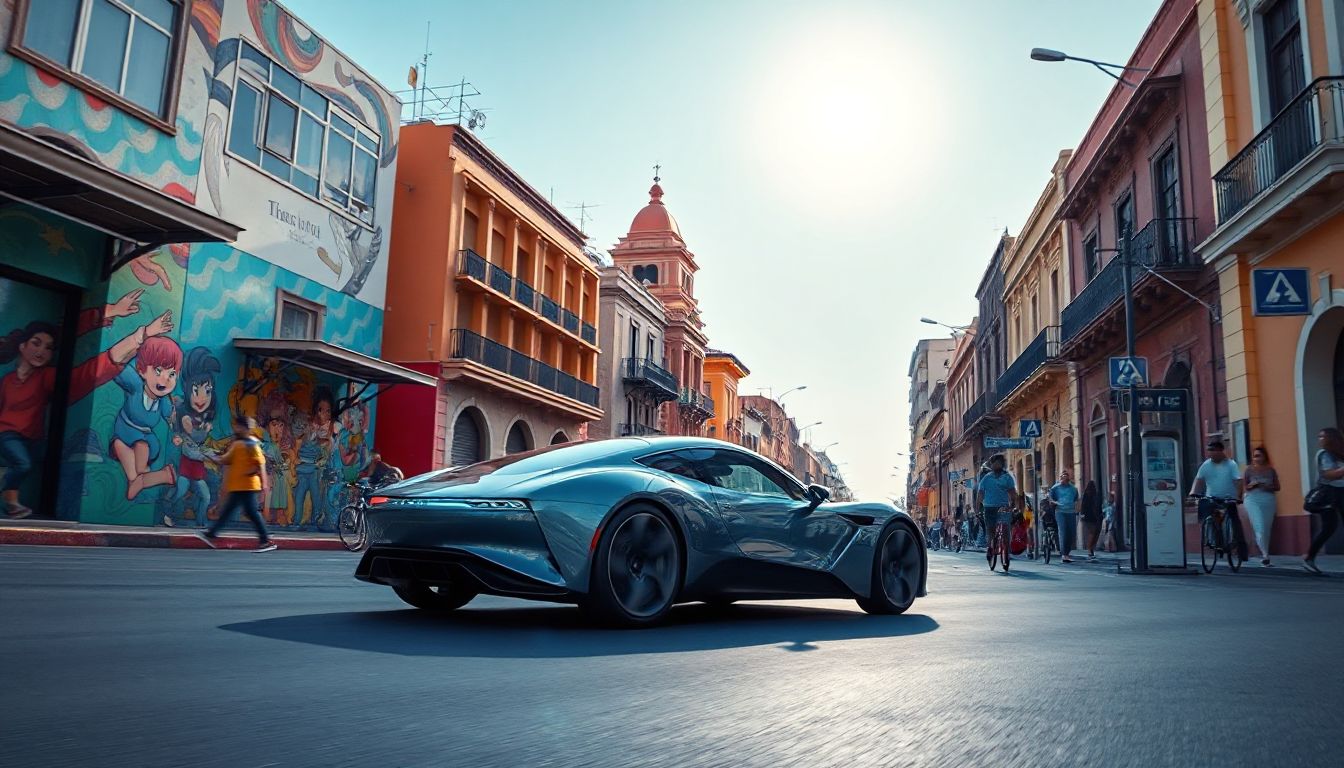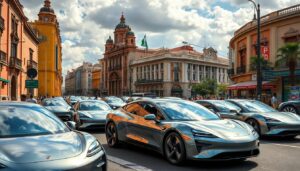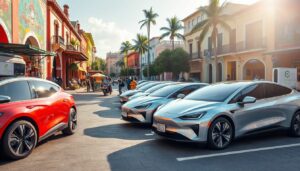Introduction
The world is shifting towards cleaner, smarter cars. Electric vehicles (EVs) are leading the charge globally. Mexico is catching up fast, embracing new technology that promises a better future. 2025 is set to be a turning point — when EVs go from niche to normal on Mexican streets. This change can bring huge benefits, from cleaner air to new jobs. It’s a chance for Mexico to grow strong in green technology and reduce pollution.
Market Overview of Electric Cars in Mexico
Current State of EV Adoption in Mexico
In recent years, EV sales in Mexico have slowly gained momentum. About 3% of all new cars sold in 2023 are electric. Major cities like Mexico City and Guadalajara are seeing more charging points and interest from buyers. But compared to countries like the US or China, Mexico’s EV market still has room to grow. Thanks to affordable options and better awareness, more people are considering electric cars.
Government Policies and Incentives
Mexico has rolled out policies to boost EV use. These include tax incentives, rebates, and lower registration fees for electric cars. Some states offer free parking or access to carpool lanes for EV owners. Compared to Europe or the US, these incentives are still new but growing. The government also aims to upgrade roads to support charging stations and cleaner transportation.
Key Market Players and Brands in Mexico
Many big names are bringing EVs to Mexico. Nissan’s Leaf remains popular thanks to affordability. Chevrolet offers the Bolt EV, and BMW’s i3 is available for those seeking luxury. Tesla is gaining ground with its Model 3, appealing to early adopters. New startups and importers are also introducing smaller, cheaper electric models, making EVs more accessible.
Consumer Attitudes and Market Potential
Survey data shows awareness of EVs is rising. People like the idea of saving on fuel and maintenance. Still, some worry about charging stations or vehicle range. Overall, experts believe Mexico’s EV market could triple by 2025. This growth depends on things like infrastructure and prices coming down.
Infrastructure Development for Electric Vehicles
Charging Station Expansion
Right now, Mexico has about 500 fast-charging stations nationwide. By 2025, plans call for thousands more, especially along highways. Public charging points are being installed at shopping malls, gas stations, and city centers. Private firms are also building fast-charging corridors to make long trips easier. These efforts will make charging more convenient for everyone.
Integration with Renewable Energy
To make EVs even greener, Mexico is boosting renewable energy sources like solar and wind. There are projects to power charging stations with clean energy, so using an EV becomes truly eco-friendly. Cities like Mexico City are experimenting with green energy grids that power public charging points, reducing carbon emissions.
Policy and Investment Strategies
The government is encouraging private investments. Loans, grants, and partnerships with businesses are helping build infrastructure fast. Big companies are investing in charging networks, and some cities plan to make EV-friendly zones. These initiatives aim to connect more charging stations to existing power grids quickly and cheaply.
Challenges and Opportunities
Building enough charging stations isn’t easy. Space, cost, and utility connections are hurdles. But these challenges open doors for entrepreneurs and new tech companies. Every new charging point boosts confidence in EV use, helping Mexico reach its green goals faster.
Technological Advancements and Innovations
Improved Battery Technologies
Batteries are improving fast. New tech means more range per charge — some EVs can now go over 250 miles on one fill. Charging times are dropping, too. Cheaper, longer-lasting batteries will make EVs more affordable for Mexican consumers. Local research and collaboration with foreign firms help produce better, cheaper batteries.
Vehicle Connectivity and Smart Features
EVs are becoming smarter. They connect to your phone and house systems for better control. Vehicle-to-grid tech allows cars to feed energy back into the city power grid during peak hours. For consumers, this means more control, savings, and less worry about running out of charge.
Electric Vehicle Models and Variants Available
By 2025, Mexico will host a wider variety of EVs. Compact hatchbacks, family SUVs, and even electric trucks are on offer. Commercial EVs are also starting to appear, perfect for deliveries or business needs. This diversity helps meet different budgets and lifestyles.
Environmental and Economic Impact of EV Adoption
Reduction in Greenhouse Gas Emissions
Switching to EVs can cut emissions significantly. Based on current data, Mexico’s EV adoption could reduce city air pollutants by up to 30%. Compared to traditional cars, electric models produce no tailpipe emissions, improving air quality—all while helping fight climate change.
Job Creation and Industry Growth
Growing EV use creates jobs. Car manufacturing, maintenance, charging station installation—all need workers. The government encourages local factories to produce electric parts, which sparks new industries. Better infrastructure attracts more investments, boosting Mexico’s green economy.
Cost Benefits for Consumers
Electric cars can lower total ownership costs. They use less fuel and require less maintenance. Early adopters report saving hundreds of dollars yearly. Incentives like discounts and tax breaks make buying EVs even more appealing. Over time, electric models become a smarter financial move.
The Roadmap to 2025: Challenges, Opportunities, and Next Steps
Barriers to EV Adoption
Many potential buyers still worry about charging options or upfront prices. Some think long-distance trips might be difficult. Misinformation and lack of trust also slow adoption. Overcoming these hurdles is key to making EVs mainstream.
Policy Recommendations
To accelerate change, clear policies are needed. Stronger incentives, better infrastructure, and public education will help. Local governments should work with private firms to expand charging networks fast. Creating awareness campaigns will dispel myths about EVs.
Actionable Tips for Consumers and Businesses
Consumers should research different models and consider how often they travel. Look for incentives and charging options nearby. Businesses can invest in electric fleets, installing charging points on-site. Partnering with EV manufacturers or service providers can boost growth.
Future Outlook and Trends in Mexico
Expect more affordable EV models with longer ranges. Governments will tighten emissions rules and offer more incentives. International collaborations will bring new tech, making EVs more accessible. Mexico has a real chance to lead the region in electric mobility.
Conclusion
Mexico’s electric vehicle scene is on the rise, heading into 2025 with momentum. Key areas like charging infrastructure, policies, and smarter tech will shape this future. The more we support these changes, the faster cleaner, better transport becomes normal. Everyone—from consumers to policymakers—has a role to play. Together, we can drive Mexico towards a greener tomorrow.




